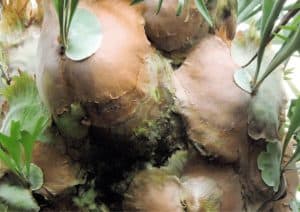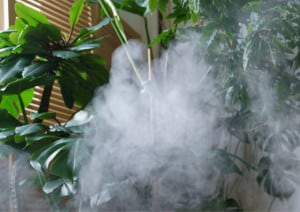5 Of The Worst Indoor Plants For Allergies (Stop Your Sneezing!)
-
Chris Dosser
- January 31, 2021
If you buy something using the retail links in our articles, sometimes we earn a small affiliate commission. This does not impact the products we recommend.
Simply put, allergic reactions are when your body’s immune system thinks a harmless substance is in fact harmful. This then triggers a response that is designed to protect the body but is actually quite uncomfortable and even sometimes dangerous.
For all the good our immune system does fighting off illnesses and disease, it can be tricked into misfiring when it comes into contact with certain substances such as plant particles and dust.
Some of the worst offenders of allergenic plants kept indoors are:
- Weeping Fig
- Bonsai Trees
- Fern
- Lillies
- Chrysanthemum
(remember that each of our immune systems are different, what may cause a reaction in some people may be absolutely fine for others).

What allergic reactions are triggered by indoor plants?
You’re probably familiar with hayfever, even if you’re lucky enough to feel no ill effects when plants disperse their pollen into the air. In the case of hayfever symptoms usually experienced include a runny nose, irritated eyes, and even asthma.
Inhaling airborne allergens such as pollen is an example of indirect contact that causes respiratory reactions, with more severe reactions amounting to the irritation and inflammation of the airways.
Many plants have also developed natural defences to protect themselves from harm sustained by grazing animals. These defences are commonly chemical compounds such as irritating saps discharged by damaged leaves or stems, and can cause an allergic reaction. Should our skin come into contact with these saps it is possible you might experience itchy skin, skin lesions, eczema and even severe symptoms such as anaphylactic shock.
We’ve explored a few of the plants that might cause allergy sufferers a problem so that you know some of the potential risks.
Weeping Fig (Ficus Benjamina)
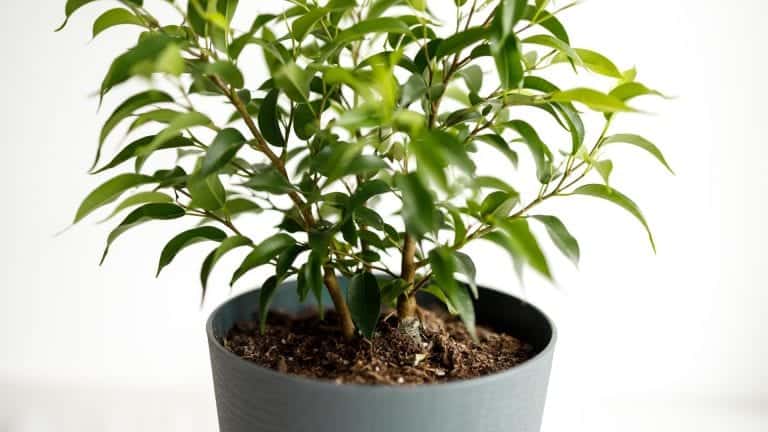
Weeping fig plants, or Ficus benjamina, is a beautiful indoor plant that is tall and has luscious green leaves. However, the plant’s leaves, trunk, and sap all can trigger an allergic reaction similar to one caused by latex in certain people.
Allergic reactions to Weeping fig plants can also cause a skin irritation. If you or someone in the house has a persistent skin problem, try moving the plant away from high traffic areas, or place it behind other plant pots that you have grouped together.
Bonsai Trees (Various species)
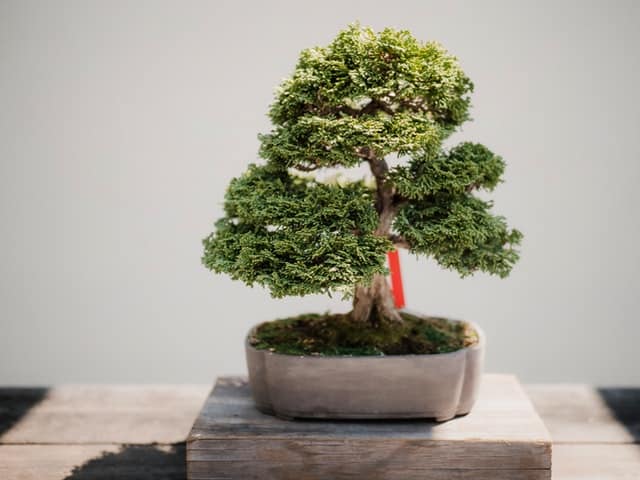
Bonsai trees are from Japan, where their cultivation and shaping is an art form. Many bonsai experts warp and manipulate the plants to look like miniature versions of large trees and their surrounding scene.
However, despite their beauty and heritage, when particular tree species are trained by the art of Bonsai they can trigger an allergic reaction in those sensitive to tree pollen.
Birch pollen for instance is the substance that causes most hayfever reactions in spring, throughout summer, and even early fall. If you suffer from hayfever at these times, it may well be that you have an intolerance to birch pollen.
It might be advisable to keep your Bonsai tree near a window. This will mean that pollen will be less likely to accumulate and less likely to get into your system.
Juniper Bonsai specifically is a plant to be avoided for people who suffer from allergies. The plant is known to cause rashes on the skin of people who touch of come into contact with it during pruning. To combat, just wear gloves.
Boston Fern (Nephrolepis exaltata)
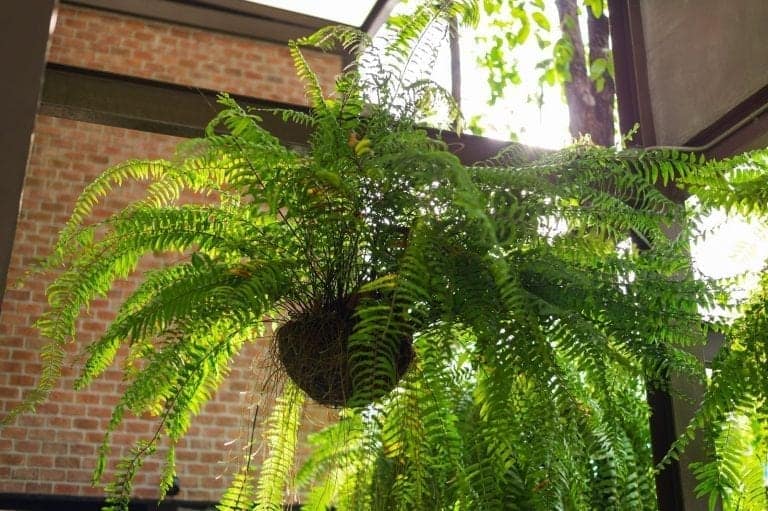
Whereas irritating sap and pollen are the reasons Weeping figs and Bonsai trees could trigger an allergic reaction, the Boston fern poses an altogether different problem.
The huge surface area of their lush foliage can trap and collect airborne dust, mold, and even pet dander particles. Meaning, when the fern next gets moved or disturbed all those particles will be reintroduced to the air in a cloud of allergens.
Although houseplants do naturally filter the air, (removing carbon dioxide and toxins), they also need to be cleaned to avoid dust and other allergens finding somewhere to hide.
Lillies (Lilium)
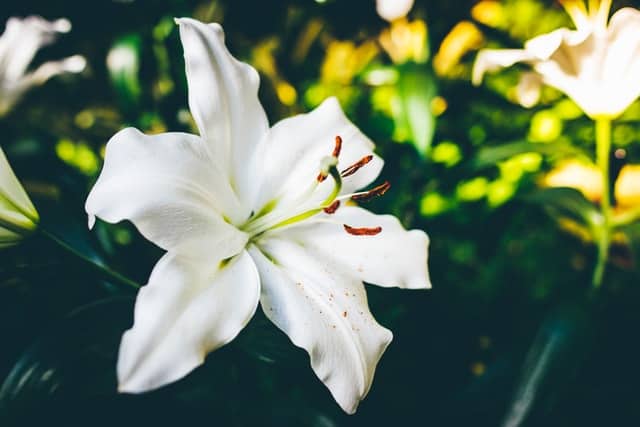
Lilies are a flowering plant that are often brought inside for short periods of time, often in flower bouquets or given as gifts. Although they can be a real centrepiece of the dining table or living room, they release a huge amount of pollen into the air.
If you’ve ever seen a Lily up close, you will have seen the brown stems inside the flower that hold pollen. The pollen is easily knocked off into the air. In the wild, this pollen is quickly taken away by bees and other insects, whereas inside it has more opportunity to cause a reaction.
The reaction that Lilies cause is essentially the same as a typical hayfever reaction. Symptoms include bloodshot and watery eyes, a blocked and/or runny nose, as well as tiredness and headache.
To avoid the allergic reaction, the pollen heavy stems can actually be removed from the plant which might help. Simply put on a pair of gloves and maybe even a face mask, then cut the stems and dispose of them. This will reduce the amount of pollen getting into the air.
Chrysanthemum (Chrysanthemum)
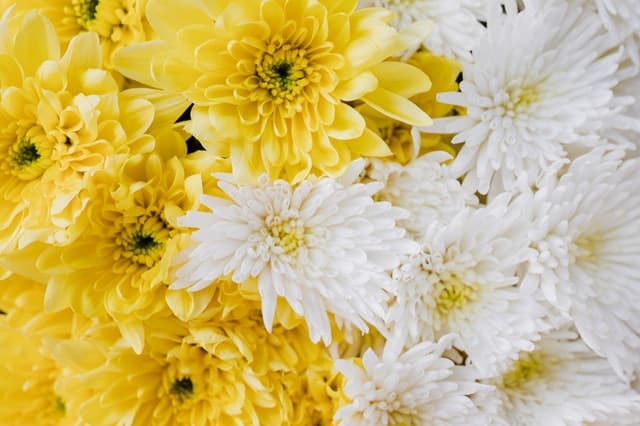
Chrysanthemum’s are typically seen in a bush like formation with strong and vibrant colors. Many differently colored flowers are commonly arranged together to make beautiful centrepieces.
However, much like Lilies these plants can introduce a lot of pollen to being circulate indoors.
Sneezing, a runny nose, itchy eyes, and uncomfortable skin rashes can all be caused by a reaction to Chrysanthemum pollen. So, if you simply must have them indoors, keep the windows open, or make sure to wipe away any pollen dust as often as you can.
Takeaway
By all means do not let the allergenic properties of some plants put you off adding them to your collection, just be mindful of what you can do to minimise the chances that your own allergies are triggered.
Consider one of these air purifying plants instead if you are someone who is good friends with the box of antihistamines in the medicine cupboard.

Chris Dosser
Co-Founder of Eden Indoors
Chris is a self-taught horticulturist with over a decade of experience caring for houseplants and creating lush, thriving indoor oases. He specializes in Monstera, and by self admission has a serious problem with buying and propagating rare indoor plants!
Similar Posts
My Staghorn Fern Shield Frond Is Brown – Is This Normal?
Leaves and foliage turning brown is often a sign of danger for a plant....however not always! Case in point being the shield fronds of a Staghorn fern.
Do Flea Bombs Kill Houseplants? (Fatal Flea Fogger?)
Do you need to remove houseplants from a room that is to be smoked with a flea bomb? Or is the flea fogger harmless to plants? Experimental results here...

